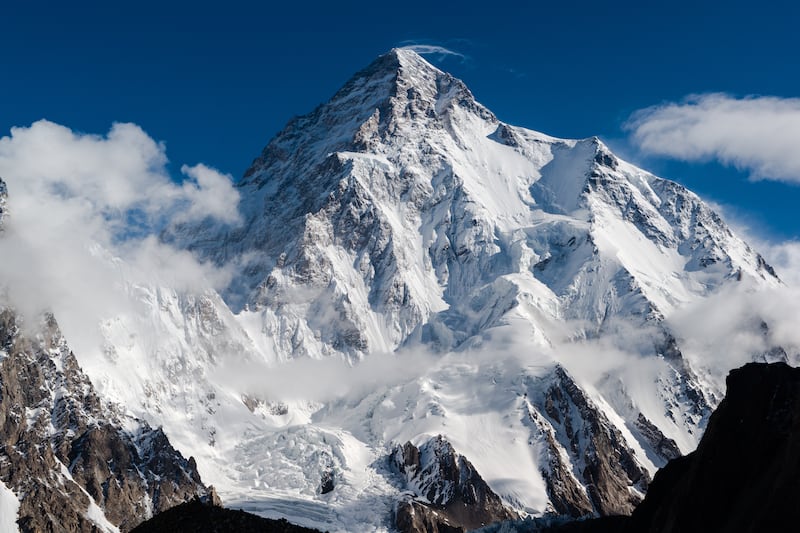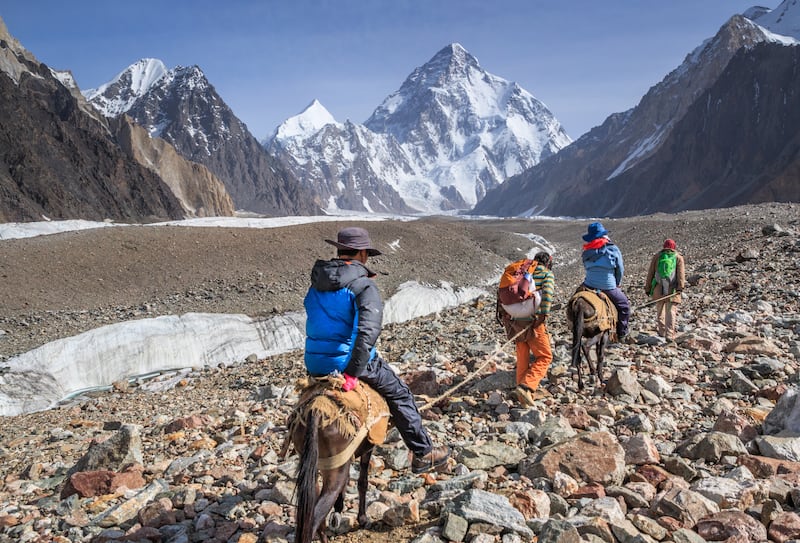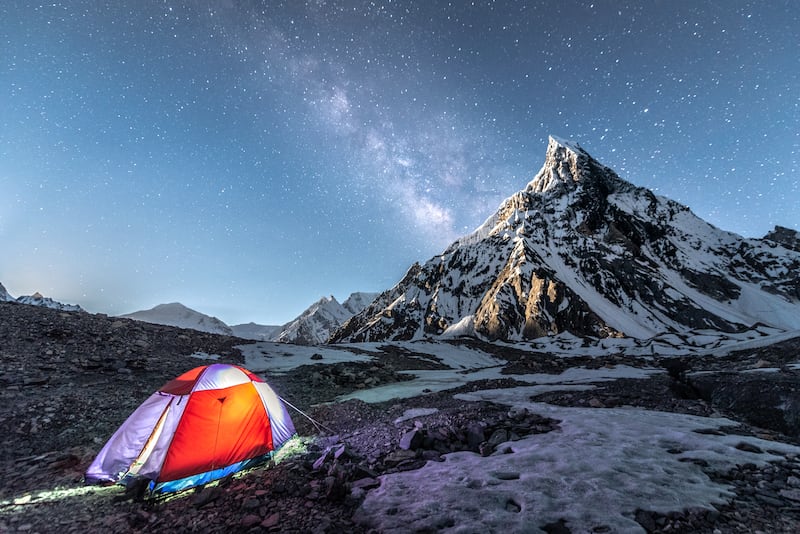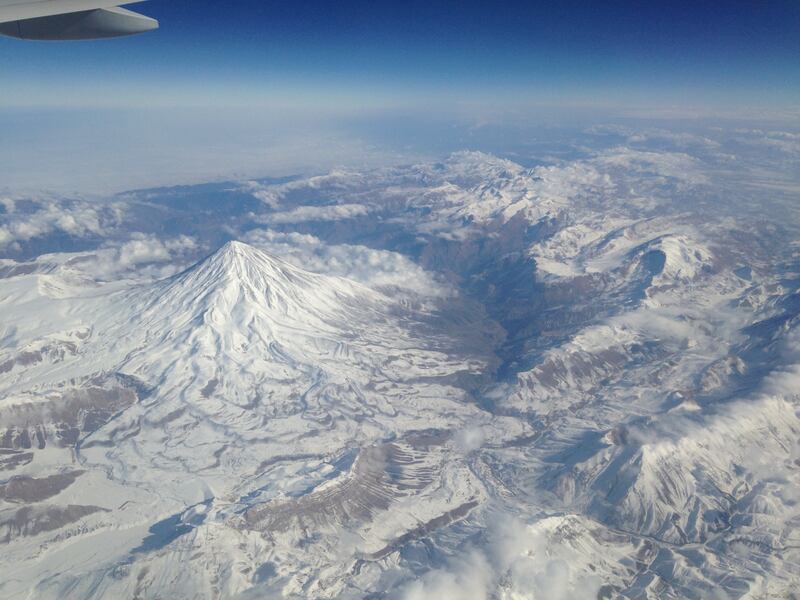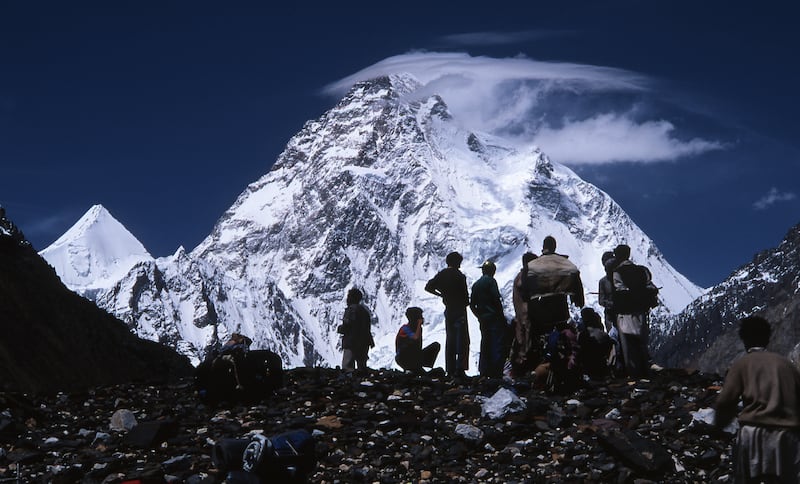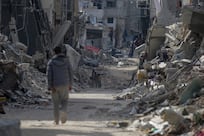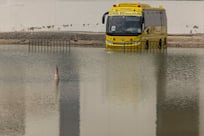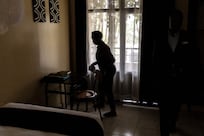They call it the bottleneck, a zone of death on K2, the second highest mountain in the world.
The peak, by most estimates, is the world's most dangerous for climbers. K2 has a far higher death rate among climbers than the more famous Everest.
The bottleneck is the most difficult part for mountaineers who try to reach the summit of the 8,611m peak, known for its long, fearsome ascents and deadly, changeable weather conditions.
It is situated in a narrow gully, or couloir, with steep sides and is covered in seracs, or blocks of glacial ice, that come from the ice field east of the summit.
Situated 400m from the summit, the couloir requires climbers to traverse an area of jagged ice for about 100m, where any misstep could prove fatal.
The last stretch of the climb is called the “death zone”, since few people can survive for long beyond this point.
One of the most recent deaths was mountain porter Muhammad Hassan, who perished on July 27, in the last few hundred metres of the climb, allegedly abandoned by fellow climbers despite being mortally injured.
A group of climbers led by record-breaking mountaineer Kristin Harila and Nepali Tenjin Sherpa were accused by some of leaving him to die, but last week they were cleared by a Pakistani inquiry of any wrongdoing. They said they tried everything they could to help Hassan, who was dangling upside down on a rope before suffering fatal injuries in a fall.
Ahmed Hussain, an expert climber who made the ascent, says Hassan’s tragic story is not as simple as one of abandonment. He points to the nearly impossible conditions at altitudes close to the cruising altitude of most commercial airliners.
Numerous mountaineers have lost their lives at the bottleneck in recent years.
Mr Hussain is one of the members of the team who recently reached the summit of K2 and had met Hassan on previous expeditions.
Mr Hussein told The National that several mountaineers on K2 died in recent years and their bodies remain at the same point.
Mr Hussain said that in 2007, 11 people died in the death zone during their attempt to climb the mountain. In February 2020, famous mountaineer Ali Sadpara and another foreign climber were lost there and their bodies had to be abandoned because they could not be brought down.
Mr Hussein said that in 2021, a foreign climber died near Camp 2 when he fell during a heavy snowfall.
Do-or-die battle
“Crossing the bottleneck is a do-or-die battle. A climber can’t put too much weight on the snow since one may go down into it. Also, the terrain is very narrow. Another serious problem is that too much cold can result in blood clots in the body, resulting in the death of a mountaineer,” Mr Hussain said.
He also denied that they intentionally left Hassan to die. He said it was impossible to carry a casualty back to base camp, because the terrain is too dangerous to traverse, which is why anyone unable to stand is often left in the bottleneck.
In October 2017, American climber and adventurer Vanessa O'Brien told Voice of America that mountain climbers are aware of changes to the body at altitudes above 8,000m, near the stratosphere.
She said the oxygen levels are greatly reduced and mountaineers frequently experience serious high altitude sickness. That can involve extreme mental confusion and dizziness, even swelling of the brain.
A frequent risk above 2,500m, high altitude sickness would be dangerous enough on K2 without the added challenge of fearsome, icy rock faces, bitingly cold winds and, occasionally, deadly avalanches.
Syed Anwar Ali, a supervisor for Laila Peak – the company that organised the expedition for Hassan and other porters – told The National that most fatalities on K2 occurred in the bottleneck.
“Before Hassan, the known mountaineer Sadpara and others also died in the death zone. In 2008, 11 people were trying to cross the death zone when they were buried alive by an avalanche,” he said.
Anwar Ali further said that the bottleneck is risky because of several factors, including its narrow path on which a mountaineer has to tightly hold a rope with one hand and an ice-axe in the other hand while also trying to walk slowly to avoid falling and disappearing in deep snow.
Retrieving a body from the death zone
Authorities and mountaineers say they are forming a team to recover Hassan's body. However, some say it is all but impossible to recover bodies from the death zone.
An anonymous official from Shigar district said that some mountaineers were now trying to earn money and were demanding large sums of money in return for recovering Hassan’s body.
“One team demanded Rs20 million ($65,000) for this rescue mission to bring down Hassan’s body, but this is a huge amount,” he said.
“Hassan’s body is stuck in the bottleneck,” Mr Anwar Ali, the expedition organiser, said.
“Before him, Sadpara also lost his life in the death zone, but his body was a little bit more reachable compared with the place where Hassan’s body is stuck. It means Hassan is stuck in a more dangerous place than that of Sadpara.
“Ali Sadpara’s son and mountaineer Sajid Sadpara and a team went to fetch his father’s body, but he could only bring it to camp four, where he buried his father’s body because he could not bring it down any further.”
Assistant Commissioner of Shigar district Hamza Murad told The National that climbing is very risky at the start of August because of the harsh weather. But he said they had decided to send a team to recover Hassan’s body because it had become such a high-profile case.
“As per estimates, this mission may cost Rs5 million,” he said.
“The team will determine whether they can retrieve the body this time or, if they cannot do so now, maybe we will attempt it next year when weather is favourable,” he added.
